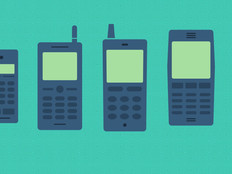Wireless Connectivity Options Abound for IoT
For IT professionals still reeling from the challenge of meeting bring-your-own-device (BYOD) and rising Wi-Fi traffic demands, the rapid advance of technology leaves little time to catch one’s breath. Many organizations now are turning their attention to the emerging Internet of Things (IoT), which is unleashing a new series of network challenges that will severely test already stressed infrastructures.
IoT applications, such as connected vehicles, environmental monitors and industrial controls, are projected to grow rapidly over the next few years. A 2016 Cisco Systems report forecasts that from 2015 to 2020, IoT will grow faster than any other category of connected devices.
When viewed from a network infrastructure perspective, IoT can simply be viewed as the latest stage in a machine data evolution that has been under way for many years. “IoT is just a new name for many of the things we’ve been doing all along — telemetry, control systems, automation and sensor-based systems,” says Craig Mathias, principal at Farpoint Group. “IoT really just means that those end devices now have Internet addresses.”
Numerous IoT Connectivity Options
Selecting a particular type of wireless network for a specific IoT application requires balancing a number of requirements: range, bandwidth, battery life, endpoint cost and operational cost. Technology market research firm Gartner forecasts that low-power, short-range networks will dominate wireless IoT connectivity through 2025, far outnumbering connections using wide-area networks. Yet Gartner also notes that commercial and technical trade-offs will require many network solutions to coexist, with specific applications emerging around certain technologies, applications and vendor ecosystems.
For now, the growing collection of IoT networking technologies includes a mix of familiar and new names.
- Bluetooth Smart, for example (also known as Bluetooth 4.0), aims to bring today’s popular Bluetooth standard into the IoT world. Geared toward the consumer market, this specification is based on an enhanced technology that helps everyday gadgets stay connected longer while using less power. Bluetooth Smart supports an emerging class of personal gadgets such as fitness trackers, medical devices, vehicle key fobs and home lighting controls.
- Bluetooth Low Energy (BLE), another consumer-oriented protocol, is designed for use with low-powered devices that use only modest amounts of data. To conserve power, BLE sits in sleep mode until a connection is initiated. BLE’s power thriftiness makes it ideal for fitness trackers, health monitors and other battery-operated devices.
- ZigBee is a 2.4GHz mesh local area network (LAN) standard. ZigBee was designed for building automation and control applications for devices such as thermostats, lighting systems and even production machinery. With its mesh topology and ad-hoc routing attributes, ZigBee is often used for applications requiring a high degree of stability in changing conditions.
- Google Thread, an open protocol, is essentially Google’s version of ZigBee. The two standards have a lot in common, and it’s actually possible for device-makers to use some of the same chips for both Google Thread and ZigBee products, since both protocols are based on the IEEE 802.15.4 networking standard.
- Wi-Fi is already widely used for IoT connections, and the HaLow (802.11ah) protocol extends the technology into the 900MHz band to provide the low-power connectivity required by many IoT devices. HaLow’s range is almost twice that of current Wi-Fi networks, enabling it to transmit signals farther, as well as to more easily penetrate walls and other barriers.
- Another promising IoT protocol is Low Power Wide Area Network (LPWAN), which is designed to support wireless battery-operated devices inside a regional, national or global network. This protocol meets several key IoT requirements, such as secure bi-directional communication, mobility and localization services. The protocol is also designed to provide seamless interoperability among IoT devices.
- Cellular technology provides yet another IoT networking option. Despite their relatively high cost, cellular networks can deliver reliable, secure IoT service over an existing network infrastructure. Both 3G and 4G services can be used for IoT devices, depending on the data rate required.
Choosing IoT Standards Is a Balancing Act
It’s likely that the current collection of IoT network specifications will thin out over time as standards are formally ratified and solution providers settle on a smaller number of widely accepted protocols. The bad news is that this process will take some time. “In today’s market, the only way a standard is going to see its way through to ratification is for the market to be dominated by products using that standard already. But we’re still a few years away from that type of consolidation,” observes Fred Chagnon, research director of the infrastructure practice at the Info-Tech Research Group, a technology research and advisory firm.
In the meantime, new IoT adopters will have to tread carefully. “If you decide to go pre-standard, you’re taking a chance that you’re locked into that vendor,” says David Sumi, senior vice president of marketing and product management for wireless network solutions provider Proxim Wireless.
Farpoint Group’s Mathias, however, says that IoT adopters shouldn’t get too hung up on making the right standards choice. “You should look at things from the applications end rather than the standards end,” he advises. “After all, you really don’t care what the standard is; what you care about is that the application is properly addressed.”
According to Mathias, with IoT network technology currently in a state of flux, selecting a suitable IoT wireless technology is a task that’s best left to a solutions provider or systems integrator. “It’s much more important to get a solution that does the job and doesn’t put an undue load on either the finance department or operations,” he says.
“Imagine you’re building a network to connect devices in a time before the world had settled on TCP, UDP, IP and HTTP, and govern yourself accordingly,” Chagnon advises. “Decision-makers should seek a fast ROI to mitigate the risk of early abandonment of the technology,” he recommends.









